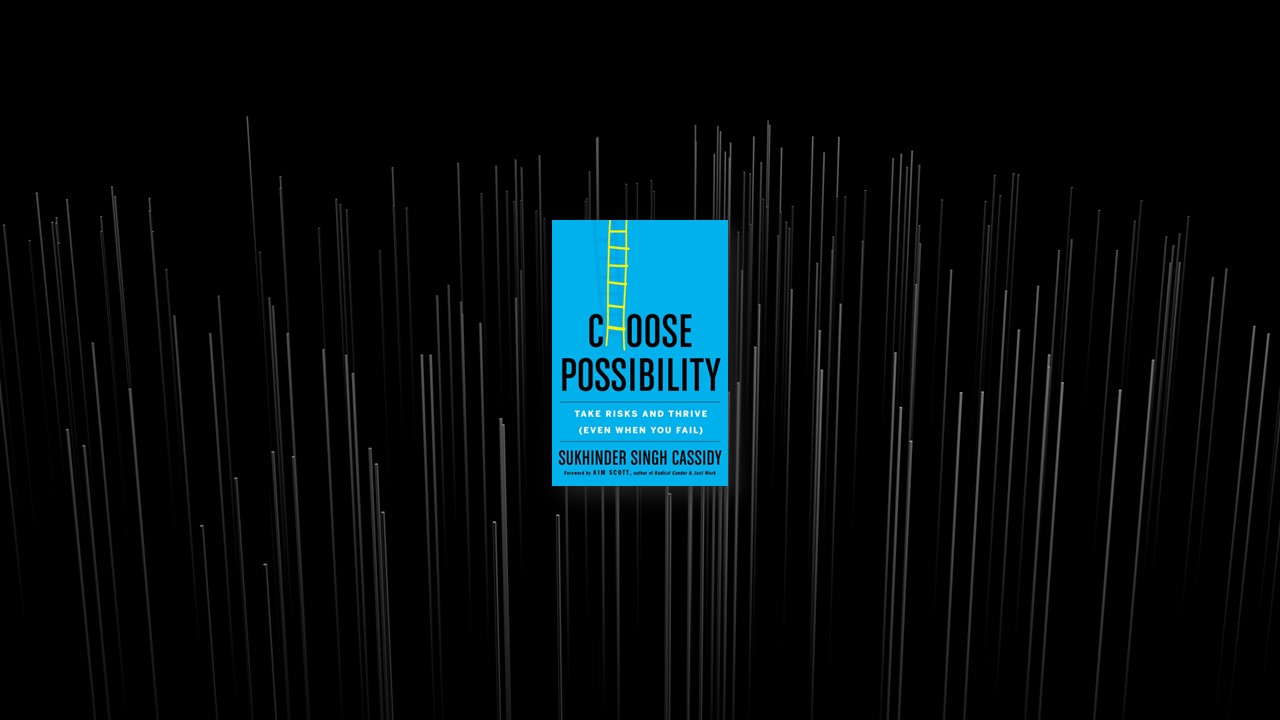Ditch the Hero’s Journey
Many of us believe that a single large choice determines our ultimate success or failure (the Myth of the Single Choice).
In truth, careers unfold over a long series of risks and choices, large and small. Multiple combinations of moves unlock success.
Our biggest risk is inaction. Grow or go!
Pump Your Risk-Taking Muscles
Taking small risks early and often helps you to build risk-taking muscles, with compounding benefits.
Rather than focusing solely on the potential for loss, we can reframe risk as decisions we make that afford us considerable upside potential.
There are four key reasons we can take risks: to discover opportunities, to learn something new, to achieve a new goal, or to avoid further harm.
The Power of Pipelining in Parallel
You don’t need perfect goals or clarity to start taking risks.
Pipelining in parallel allows us to uncover new ambitions, clarify our options, pursue high- and low-probability bets, and build momentum.
To master the process of discovery via risk-taking, own your timeline, find a brainstorming buddy, and embrace the art of passive pipelining.
Why Proximity Beats Planning
Moving closer to our goals helps us far more than creating a perfect plan from afar.
Proximity helps us visualize our ambitions more clearly, become apprentices, and gain access to interesting opportunities.
A great plan is simple, efficient, and capable of evolving as we go. Whiteboard your way to the future.
Put Who Before What When Taking a Risk
To take smarter risks, overvalue the “people factor” in your choices.
Great people help us learn via osmosis, active challenges, coaching, and social learning.
To spot your own potential superbosses, look at the talent they attract, their strengths and skills relative to yours, and the extent to which your values overlap.
It’s Not All About You
Our external environments disproportionately influence our odds of success in any choice. Beware of subscribing to the Myth of Control.
We can anticipate headwinds and tailwinds (“subways”) to find our opportunities for growth, while never fully predicting the “coconuts.”
Look for tailwinds when joining divisions, companies, and industries. In headwind situations, seek out opportunities to learn faster and contribute more.
Well, Some of It Is (How to Bet on Ourselves)
Smarter risk-taking requires that we look inward as well, aligning our choices not just with our ambitions but also with who we are at our core.
Build your self-awareness “sandwich,” taking stock of your passions, superpowers, and values.
Knowing our own kryptonite helps loosen its power over us as we seek to make choices and also execute better.
The Myth of Risk and Reward
The Myth of Risk and Reward leads us to believe that any reward occurs directly after, and in equal proportion to, the risk we originally take.
In reality, this relationship is more complicated. A combination of moves big and small over different time periods unlock bigger rewards.
Risk-taking unfolds through a process of hypothesizing, learning, making adjustments, and redirecting in ways you didn’t originally expect.
To Succeed, Forget Success
To achieve a larger success later, focus first on delivering shorter-term outcomes and impact.
Seven key choices in your day-to-day execution can help you drive more impact.
The outcomes you create along with the superpowers you build are the real rewards of any risk-taking journey, whether or not you achieve your original goal. This “career capital” continues to accumulate through successes and failures.
Impact Fails
Continually diagnosing our misses so we can keep adjusting our next choices and actions is essential to the practice of choosing possibility.
Beware the most common impact fails in our own control: too much peanut butter, mistaking motion for impact, trying to keep our fingernails clean, and failing to take feedback.
Beyond external headwinds and poor “people fit” factors, bias and prejudice are the greatest external enemies of impact, preventing individuals or groups from accessing possibility equitably.
The Sines of Growth
Real growth isn’t linear, but cyclical.
By delivering impact through each larger chapter of ambition, iterating and taking smaller risks continually to create results faster, we’ll build successful overall careers.
Frequency of risk-taking and win rate are key to longer-term success, while our biggest threat remains inaction. We each can decide to become a chooser.
Possibility and Powerflow
Possibility and power are abundant, not scarce. When we choose possibility consistently, we don’t need others to make us powerful. We generate power for ourselves.
The most powerful people are those who help power flow to others.
We all have an opportunity to generate possibility for others in the process of generating it for ourselves. We can choose to multiply our impact too.


